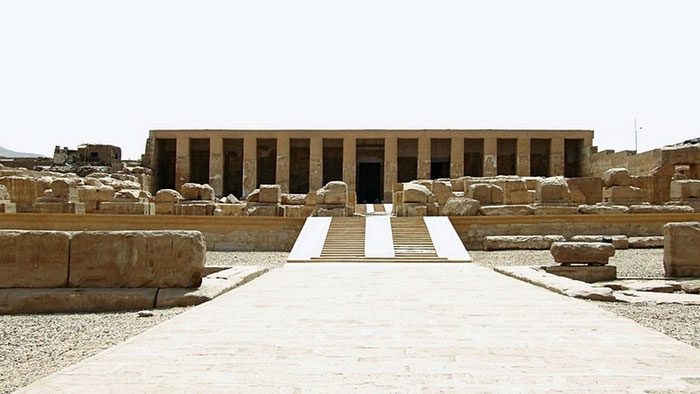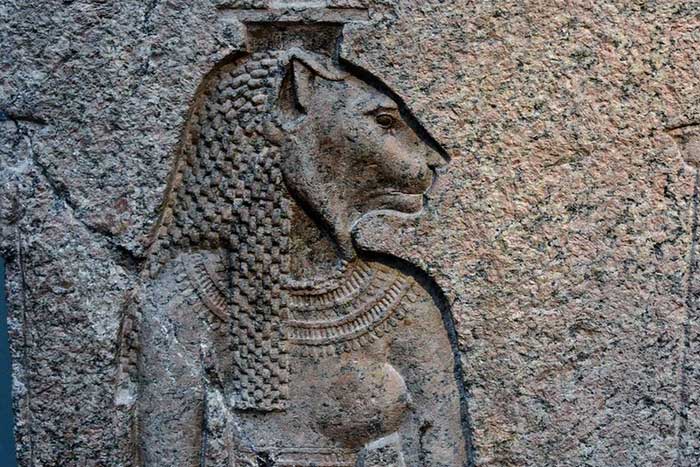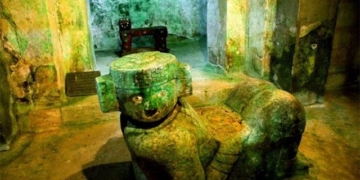Thinis is a city that has sunk deep into the oblivion of humanity; however, many believe that it is the first capital of ancient Egyptian civilization.
Returning to the earliest history of Egypt, before Thebes and Memphis, before the Sphinx and the great Giza pyramids, lies the early period of the Egyptian dynasty. This period followed the unification of Upper and Lower Egypt around 3,100 BC, marking the first significant moment of a kingdom that would endure for millennia.
The early dynasties may seem unfamiliar to us when compared to the later traditions of Egypt.
The kings of this early Bronze Age ruled from their capital of Thinis. This legendary capital is considered the first capital of ancient Egypt, as confirmed by later historians and Egyptian priests, yet the modern world still does not know its precise location.
Ancient authors such as Manetho, an Egyptian priest who lived during the Ptolemaic period, mentioned Thinis in their works. This lost city has also been referenced in several religious texts, such as the “Book of the Dead,” more commonly referred to as “The Egyptian Book of the Dead.”
Some archaeologists suggest that this city may be located near Abydos or within the modern city of Girga, but its exact position remains a mystery to this day.

The city of Thinis is believed to be the first capital of ancient Egypt.
Although the exact location of Thinis has yet to be discovered, it can be confidently stated that it is situated near Abydos, one of the oldest cities in Egypt. This suggests that the first capital of Egypt was surrounded by the harsh deserts of North Africa.
The First Dynasty of Egypt began with a man whom Manetho referred to as Menes. This pharaoh was the leader of the Thinite Confederation, a tribal alliance from what is now known as Upper (southern) Egypt.
Menes unified Upper and Lower (northern) Egypt and transformed his confederation into a kingdom that stretched along the length of the Nile River, and it is reasonable to assume that he established the capital near his homeland.
After the turmoil of the Second Dynasty of Egypt, during the Third Dynasty around 2,650 BC, this city began to rapidly decline. New pharaohs attempted to restore order to the country and established a new capital nearby, which they named Memphis.
Thinis, as the homeland of the pharaohs of the First and Second Dynasties, would have been a city of immense significance. The construction of Thinis could have been similar to other ancient Egyptian cities like Nekhen.
As a military and political center, Thinis would play a crucial role in the unification by providing food, weapons, and armies to the pharaohs. However, we cannot be certain whether Thinis had its own necropolis, as most of the tombs of the early dynasty kings are located in Abydos.

Thinis was a wealthy city.
According to historical sources, Thinis was a wealthy city. Even after it was replaced by Memphis as the capital of ancient Egypt, it remained very prosperous. By the end of the reign of Thutmose III, the sixth pharaoh of the 18th dynasty who ruled 1,500 years after Egypt’s establishment, the annual tax levied on Thinis was recorded as 6 deben (about 91 grams) of gold, half a deben of silver, along with livestock, grain, and honey…
The wealth that Thinis possessed in the subsequent years remained higher than that of Abydos—Abydos only had to pay three sacks of grain annually, compared to 65 sacks from Thinis. Such taxes are evidence of the wealth that the city of Thinis continued to generate throughout Egypt’s history.
This paints a picture of Thinis as a thriving city, though no longer the capital, it continued to prosper through successive Egyptian dynasties.
Ancient documents from Manetho left an impression of a city known for its wealth up until the end of the Ptolemaic period, around the 3rd century BC.
Moreover, the types of taxes suggest something about the city. While Thinis was undoubtedly a religious center, the taxes indicate that the primary material value of the city and its surrounding lands was agricultural land.
Most ancient Egyptians were farmers closely tied to their land. They lived in houses constructed from materials such as wood and mud bricks, and only significant structures like tombs and temples that were meant to last were built from stone instead of mud bricks.

The city of Thinis truly existed.
The city of Thinis has been clearly documented in several sources about ancient Egypt. However, its exact location remains a mystery to us, as does what ultimately happened to this first great city of Egypt.
Nevertheless, one thing is certain: Thinis did exist. The remnants of the city and the secrets it may reveal about the first pharaohs are waiting for us somewhere beneath the sands.


















































